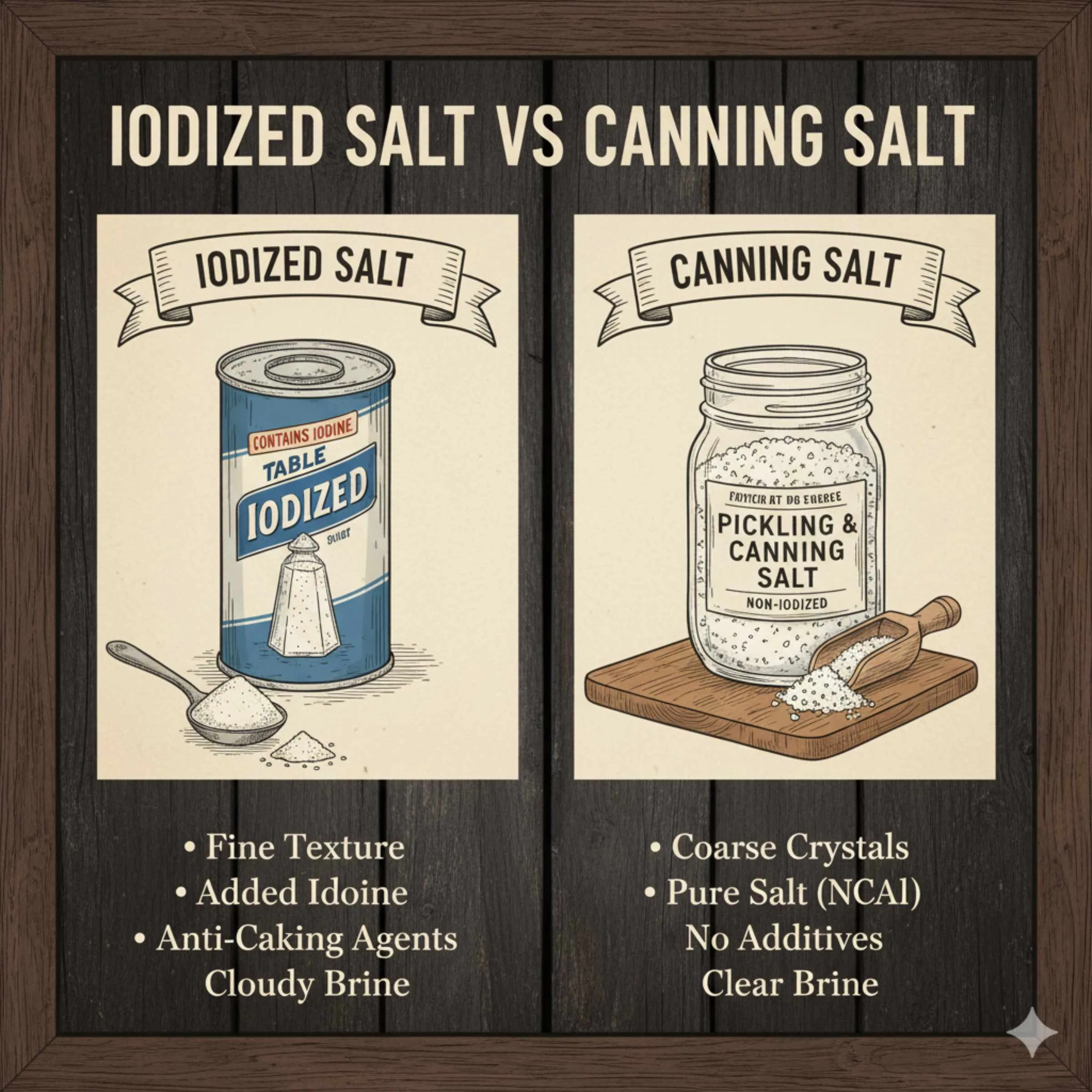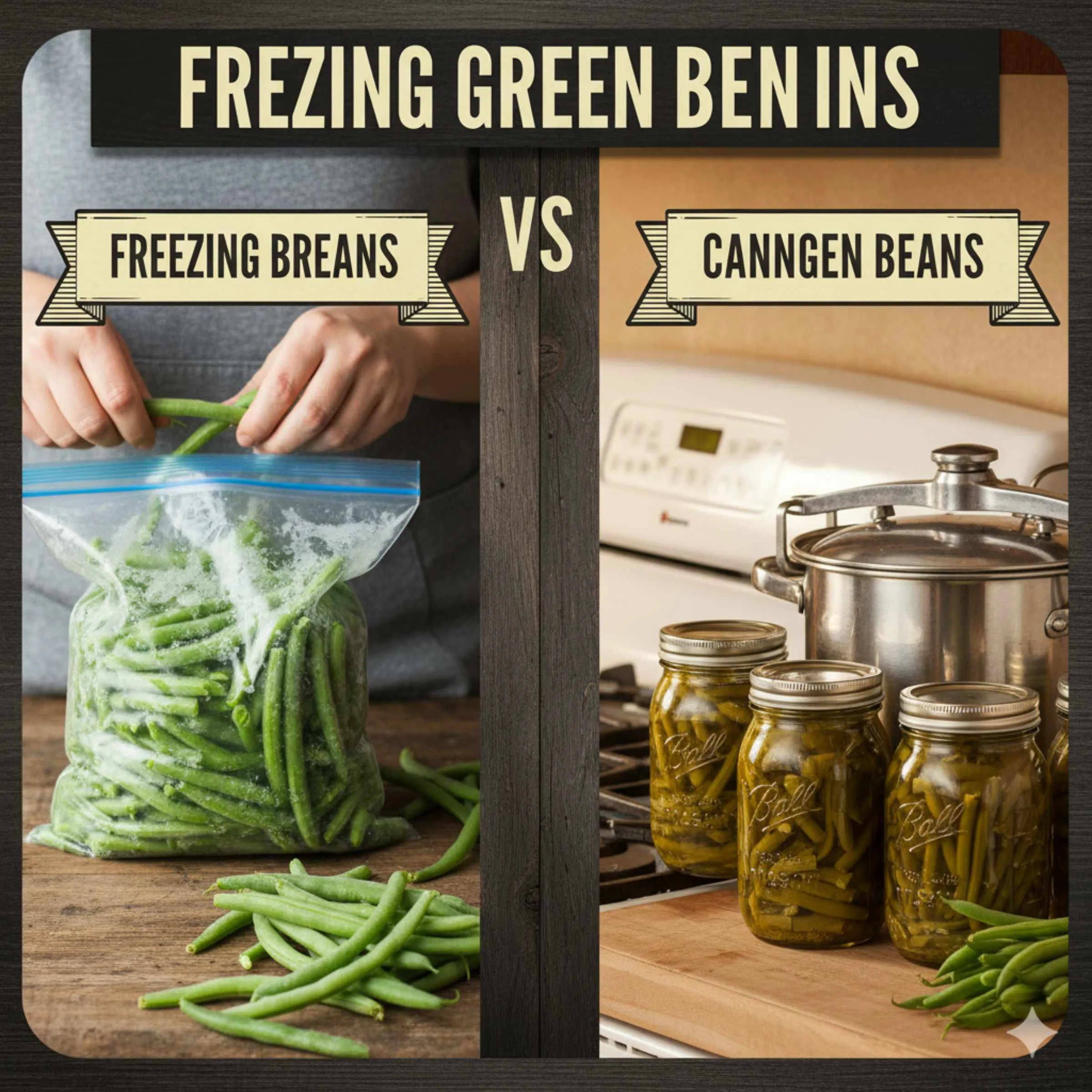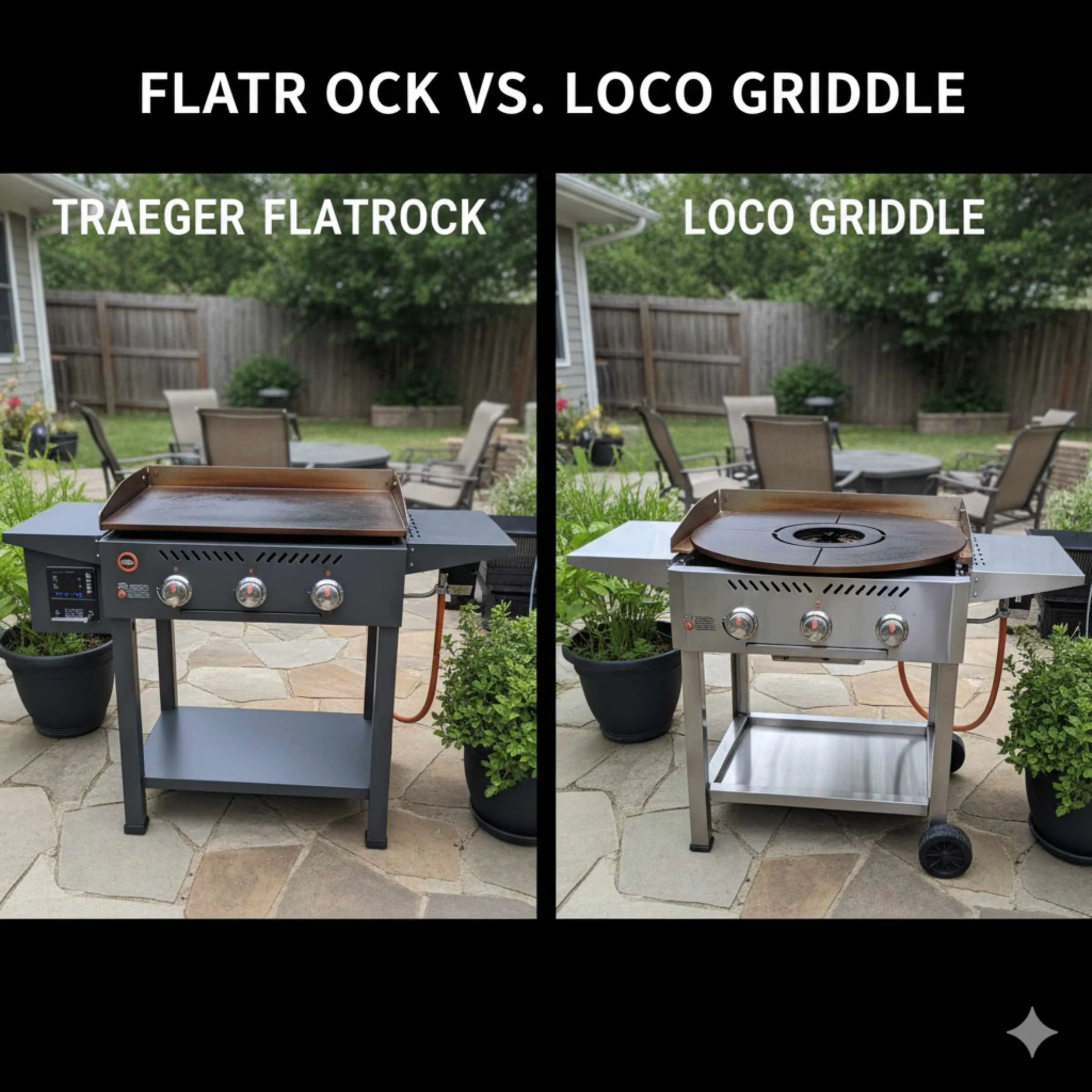Hard anodized vs stainless steel cookware: For everyday cooking ease, hard anodized offers excellent non-stick properties and even heating, while stainless steel is incredibly durable and versatile for searing. Choose based on your preferred cooking style and ease of cleaning.
Deciding on new cookware can feel overwhelming! You want pots and pans that make cooking a joy, not a chore. Two popular choices you’ll often see are hard anodized and stainless steel. They’re both fantastic, but they’re good at different things. If you’re wondering which is best for your kitchen, you’re in the right place! We’ll break down what makes each one special, so you can pick the perfect set to help you create delicious meals with confidence.
Why Cookware Material Matters
The material of your cookware isn’t just about looks; it directly impacts how your food cooks. Different metals conduct heat differently, react (or don’t react) with food, and have varying levels of durability and ease of care. Choosing the right material means better results in the kitchen, less frustration, and cookware that lasts for years. Think of it as laying the foundation for culinary success!

Understanding Hard Anodized Cookware
Hard anodized cookware is made from aluminum that has gone through a special electrochemical process called anodization. This process hardens the aluminum surface, making it non-porous and much more durable. It’s like giving the aluminum a tough, protective outer shell!
How it’s Made:
The aluminum pan is submerged in an acid bath and then an electric current is passed through it. This thickens the natural oxide layer on the aluminum’s surface, creating an incredibly strong and smooth finish.
Key Characteristics:
Non-Stick Properties: While not always explicitly marketed as “non-stick” like Teflon-coated pans, the smooth, hard surface resists food from sticking much better than regular aluminum or even some stainless steels. Many hard anodized pans come with a non-stick coating applied over the anodized layer, enhancing this quality.
Even Heating: Aluminum is an excellent conductor of heat, and the anodization process helps distribute that heat evenly across the pan. This means fewer hot spots and more consistent cooking results.
Durability: The hardened surface is resistant to scratching, chipping, and warping, making it a long-lasting option for everyday use.
Pros of Hard Anodized Cookware:
Excellent Heat Distribution: Food cooks evenly, reducing the chances of burning in some spots while others remain undercooked.
Good Durability and Scratch Resistance: It holds up well against knives and spatulas compared to regular aluminum or coated pans.
Lighter Weight: Generally lighter than stainless steel, making it easier to maneuver.
Often Non-Reactive: The anodized layer prevents the aluminum from reacting with acidic foods, so it won’t impart a metallic taste to your dishes.
Easy to Clean: The smooth surface makes wiping away food residue a breeze.
Cons of Hard Anodized Cookware:
Cannot Use Metal Utensils on Non-Stick Surfaces: If your hard anodized pan has a non-stick coating, you’ll need to use silicone, wood, or plastic utensils to avoid damaging the coating.
Cannot Go in the Dishwasher: The high heat and harsh detergents in dishwashers can damage the anodized layer or any non-stick coating. Handwashing is essential.
Not Ideal for High-Heat Searing: While durable, it may not achieve the same intense, crusty sear on meats that high-quality stainless steel or cast iron can.
Can be More Expensive than Basic Aluminum: The anodization process adds to the cost.
Best For: Your go-to pan for everyday cooking like sautéing vegetables, making sauces, frying eggs, and pan-frying. It’s forgiving and easy to use.
Understanding Stainless Steel Cookware
Stainless steel cookware is the workhorse of many kitchens. Made from an alloy of iron, chromium, and nickel, it’s known for its incredible durability, resistance to rust and corrosion, and timeless look.
How it’s Made:
Stainless steel itself is a material. For cookware, it’s typically formed into sheets and then shaped into pots and pans. Many stainless steel pans have a core or layer of aluminum or copper sandwiched between the stainless steel to improve heat conductivity. This is often called “clad” cookware.
Key Characteristics:
Exceptional Durability: Stainless steel is incredibly tough and resistant to scratches, dents, and rust. It’s designed to last a lifetime.
Non-Reactive: It doesn’t react with acidic foods like tomatoes, lemon juice, or wine, so it won’t affect the flavor of your cooking.
Versatility: It performs wonderfully across a range of cooking tasks, especially searing and browning.
Thermal Conductivity (with core): Pure stainless steel doesn’t conduct heat very well on its own. That’s why most good quality stainless steel cookware features a core of aluminum or copper. This “clad” construction ensures much better and more even heat distribution.
Pros of Stainless Steel Cookware:
Extremely Durable and Long-Lasting: With proper care, it can last for decades.
Non-Reactive: Safe for all types of food, including acidic ones.
Excellent for Searing and Browning: Its surface is ideal for creating that perfect crust on meats and achieving deep flavors.
Dishwasher Safe (usually): Many stainless steel pans can go in the dishwasher, offering convenience (though handwashing is often recommended for longevity).
Oven Safe: Can usually withstand high oven temperatures for finishing dishes.
Doesn’t Warp or Dent Easily: Maintains its shape over time.
Cons of Stainless Steel Cookware:
Food Can Stick: Unless it’s very well-seasoned (which isn’t typical for stainless steel) or you use enough oil, food can stick, making cleanup more challenging.
Uneven Heating (if not clad): Cheaper, single-layer stainless steel pans can have hot spots, leading to uneven cooking. Look for “clad” construction.
Heavier: Stainless steel is denser and heavier than aluminum.
Can Discolor: High heat cooking can sometimes cause discoloration, especially on the exterior, but this doesn’t affect performance.
Best For: Searing steaks, pan-frying chicken, making pan sauces, and any task where you want excellent browning and fond development. It’s also great for boiling water and cooking grains.
Hard Anodized vs. Stainless Steel: A Direct Comparison
Let’s compare them head-to-head on key features that matter most to home cooks. This will help you see where each shines.
| Feature | Hard Anodized Cookware | Stainless Steel Cookware |
| :——————– | :—————————————————————————————————————– | :————————————————————————————————————————- |
| Material | Forged aluminum that’s been hardened through an anodization process. Often has a non-stick coating. | Alloy of iron, chromium, and nickel. Often features an aluminum or copper core sandwiched between stainless steel layers. |
| Heat Conduction | Excellent, very even heating. Spreads heat quickly and efficiently. | Good to excellent, especially in “clad” construction with an aluminum or copper core. |
| Durability | Very good; scratch-resistant surface, but coatings can be damaged by metal utensils. | Excellent; highly resistant to scratches, dents, and rust. Considered very long-lasting. |
| Non-Stick Ability | Good to excellent, especially if it has a non-stick coating. Resists food sticking better than bare stainless steel. | Poor to fair; food tends to stick unless significant oil/fat is used or cooking technique is precise. |
| Reactivity | Non-reactive (the anodized layer protects food from aluminum). | Non-reactive; safe for all foods, including acidic ones. |
| Weight | Lighter than stainless steel. | Heavier than hard anodized aluminum. |
| Maintenance | Hand wash only; avoid metal utensils if coated. | Generally dishwasher safe, but handwashing prolongs life. Oven safe. |
| Appearance | Typically a dark gray or black finish. Can look sleek. | Bright, shiny metallic finish. Classic and professional look. |
| Best Use Cases | Everyday cooking, sautéing, frying, sauces, a good all-rounder for convenience. | Searing meats, browning, pan sauces, boiling, camping, high-heat cooking. |
| Price Range | Mid to high. | Mid to very high, depending on the quality and construction (clad vs. stamped). |
Which One is Right for You?
The best cookware for your kitchen depends on how you like to cook and what you value most.
Choose Hard Anodized If:
You prioritize easy cleanup: The smoother surface and often enhanced non-stick properties make cleaning significantly faster and easier.
You’re newer to cooking: It’s more forgiving and less likely to have food stick, which can be a confidence booster.
You cook a lot of delicate items: Eggs, fish fillets, and pancakes often slide right out of hard anodized pans.
You prefer lighter-weight cookware: Easier to lift and maneuver, especially larger pots.
Choose Stainless Steel If:
You want the ultimate durability: You want cookware that will truly last a lifetime and can withstand whatever you throw at it (within reason!).
You love to sear and get a good crust: This is where stainless steel truly shines, creating flavorful fond for sauces.
You cook a lot of acidic foods: You don’t have to worry about it affecting the taste.
You want maximum versatility: It can handle high heat searing, oven finishing, and is generally a workhorse for almost any cooking task.
You are okay with a bit more effort in cleaning: You understand that some sticking may occur and are prepared to deglaze or soak more stubborn bits.
Tips for Making the Most of Your Cookware
No matter which type you choose, a few simple tips will help your cookware perform beautifully and last longer.
For Hard Anodized Cookware:
Use the right utensils: If your pan has a non-stick coating, stick to silicone, wood, or heat-resistant plastic. Metal can scratch and ruin the coating, reducing its effectiveness and lifespan.
Avoid extreme temperature shocks: Don’t plunge a hot pan into cold water. Let it cool down gradually to prevent warping.
Handwash gently: Use a soft sponge and mild dish soap. Avoid abrasive scrubbers.
Don’t use cooking spray: For non-stick coatings, cooking spray can build up and become difficult to remove. Stick to a small amount of oil or butter.
Preheat properly: For optimal non-stick performance, heat the pan over medium heat for a minute or two before adding oil and food.
For Stainless Steel Cookware:
Preheat the pan thoroughly: This is key to preventing food from sticking. Let the pan get warm over medium heat before adding oil.
Use enough oil or fat: A thin layer of cooking oil or butter helps create a barrier and prevents sticking.
Don’t move food too soon: When searing or browning, let the food cook undisturbed for a few minutes. It will release from the pan on its own when it’s ready.
Deglaze to release stuck bits: After cooking, pour a liquid (wine, broth, water) into the warm pan and scrape up any browned bits stuck to the bottom. This adds incredible flavor to sauces and makes cleaning easier. You can learn more about deglazing from resources like Food Network.
Use Bar Keepers Friend for tough stains: For stubborn discoloration or hard-to-remove residues, Bar Keepers Friend is a miracle worker for stainless steel.
The Role of ‘Clad’ Stainless Steel
When you’re looking at stainless steel cookware, you’ll often see terms like “clad” or “multi-ply.” This refers to how the pan is constructed.
Disc-Bottom: A layer of aluminum is pressed onto the bottom of a stainless steel pan. This is cheaper to produce but heat distribution can be less even, and the aluminum disc can sometimes detach over time.
Fully Clad (or Multi-Ply): This is the most desirable construction for stainless steel cookware. It involves layers of stainless steel and aluminum (or copper) bonded together from the bottom all the way up the sides of the pan. This provides superior heat conduction and evenness. A common construction might be:
Inner Layer: Stainless steel (cooks food)
Middle Layer(s): Aluminum or copper (conducts heat)
Outer Layer: Stainless steel (durable and provides the exterior finish)
Look for terms like “3-ply” or “5-ply” stainless steel for the best performance.
Popular Cookware Sets to Consider
While I can’t recommend specific brands without knowing your exact budget and needs, here are some popular types of sets you’ll find, often featuring one of these materials.
All-In-One Hard Anodized Sets: Many brands offer comprehensive sets that include saucepans, frying pans, and stockpots, all with hard anodized construction, often with an added non-stick coating. These are great for beginners and everyday use.
High-Quality Clad Stainless Steel Sets: These are often an investment but provide exceptional performance and durability for serious home cooks. They might include a mix of pieces ideal for searing, sautéing, and simmering. You can find excellent resources on cookware construction from sites like Cook’s Illustrated.
Hybrid Sets: Some manufacturers create sets that include a mix of materials, perhaps hard anodized frying pans for easy searing and stainless steel stockpots for boiling and simmering.
When shopping, pay attention to the details of construction and read reviews to understand performance for your specific cooking style.

Frequently Asked Questions (FAQs)
Q1: Is hard anodized cookware safe for my health?
Yes, hard anodized cookware is considered safe. The anodization process creates a durable, non-porous surface that prevents aluminum from leaching into your food. If it has a non-stick coating, ensure the coating is PFOA-free if that is a concern for you.
Q2: Can I use metal utensils with hard anodized cookware?
It depends on whether your hard anodized cookware has a non-stick coating. If it does, avoid metal utensils as they can scratch and damage the coating. If it is just hard anodized aluminum without a coating, it’s more scratch-resistant but still, gentler utensils are always best for longevity. Always check the manufacturer’s instructions.
Q3: Will stainless steel cookware rust?
True stainless steel is highly resistant to rust and corrosion thanks to its chromium content. While it’s very durable, extreme damage or neglect in highly corrosive environments could* cause minor rusting in some cases, but it’s very rare for typical kitchen use.
Q4: Which cookware type heats faster?
Both hard anodized aluminum and clad stainless steel with aluminum or copper cores heat up very quickly and efficiently. Aluminum is a naturally excellent conductor of heat, and the anodization process enhances this. Clad stainless steel achieves similar excellent conductivity through its layered core.
Q5: Can I cook acidic foods like tomatoes or lemon sauce in stainless steel?
Absolutely! Stainless steel is completely non-reactive, making it perfect for cooking all types of foods, including highly acidic ones, without altering the flavor.
Q6: Is hard anodized cookware heavier than stainless steel?
Typically, no. Aluminum is a lighter metal than the stainless steel alloy, so hard anodized cookware is generally lighter and easier to handle, especially for larger pots and pans, compared to a similarly sized stainless steel piece.
Q7: What’s the actual difference I’ll notice when cooking with each?
You’ll likely notice easier cleanup and less sticking with hard anodized, making everyday tasks like frying eggs simple. With stainless steel, you’ll have an easier time getting a dark, flavorful sear on meats and may need to use a bit more oil or attention to prevent sticking.
Conclusion
So, there you have it! Both hard anodized and stainless steel cookware are excellent choices for building a functional and beautiful kitchen. Hard anodized offers remarkable ease of use and fuss-free cleanup, making it ideal for busy home cooks who want reliable results with minimal effort. Stainless steel, especially in its clad construction, is the king of durability, searing power, and long-term versatility, promising to be a trusty companion in your culinary adventures for years to come.
Don’t feel pressured to choose just one! Many home chefs build a collection that includes the best of both worlds. Perhaps a set of hard anodized frying pans for everyday convenience and a robust stainless steel stockpot for soups and stews. Whichever you lean towards, understanding their strengths means you’re investing in cookware that will help you create wonderful meals and enjoy the process more fully. Happy cooking!








Leave a Reply